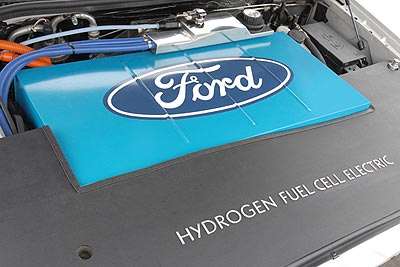Recent Articles
Popular Makes
Body Types
Fuel Cell Technology For Cars
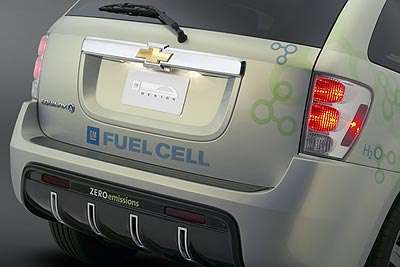
One of a number of “holy grails” sought after to reduce, if not eliminate, our automotive fleet’s dependence upon petroleum energy sources, fuel cell technology has long been pursued as a workable solution. A number of mainstream manufacturers have experimented with the technology, even going so far as to produce working prototypes. Two highly respected manufacturers have even offered fuel cell powered models to the public. However, the cost of mass manufacturing such a vehicle is still rather prohibitive — making it difficult to sell them at a profit.
The fuel cell was invented all the way back in 1839, but was then called the “gas battery”. NASA sent fuel cells into space in the 1960’s. The first auto manufacturer to put a fuel cell vehicle on the street was Honda. That company’s FCX Clarity was made available to consumers in a limited leasing program back in 2008.
Basically, an electric car powered by hydrogen, fuel cell vehicles offer the promise of providing for our transportation needs with no harmful tailpipe emissions. The upside appears infinite, however to get there, a number of challenges must be overcome.
Fuel Cell Cars: How They Work
While a fuel cell car can look perfectly conventional on the outside, on the inside it’s a completely different story. The primary components of a fuel cell vehicle’s powertrain are a hydrogen storage tank, a fuel cell stack, a high output battery, an electric motor, and a power control unit.
Hydrogen is converted into electricity in the fuel cell stack to power the electric motor. The battery stores energy collected from regenerative braking, which can be used to supplement the power produced by the fuel cell stack. The power control unit regulates the flow of electricity generated from both sources.
Within the fuel cell stack, hydrogen and oxygen (drawn from the atmosphere) are combined to produce water. As the water is produced, an electrocatalytical reaction generates electricity as well as heat. Fuel cells are similar to batteries in that they both supply electricity based on an electro-chemical reaction. However batteries eventually reach a point of depletion. Fuel cells can generate electricity independently and indefinitely, as long as they are fed a continuous supply of hydrogen and oxygen.
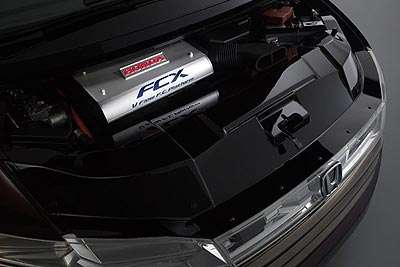
Fuel Cell Cars: The Benefits
The most obvious benefit of fuel cell cars is they emit only water from their exhaust pipes. Yes, producing the hydrogen to run a fuel cell car can generate greenhouse gases, however it is far less than those produced to generate petroleum fuels. Which, oh BTW, release more greenhouse gases when they are consumed
In fact, of all of the alternative sources of energy currently available for powering our transportation fleet, hydrogen fuel cells are by far the cleanest. They beat battery electric vehicles, plug-in hybrid vehicles, and hybrid electric vehicles in this regard. In addition to producing fewer pollutants, they can also reduce our dependence upon imported petroleum. Hydrogen can be derived from natural gas, coal and water — all of which the U.S. has in abundance.
Fuel Cell vehicles are more energy efficient than conventional cars, and since they use electric motors for propulsion, they are virtually silent in operation. The also achieve outstanding fuel economy. The two fuel-cell models currently offered both deliver estimated fuel economy in excess of the equivalent of 50 miles per gallon of gasoline.
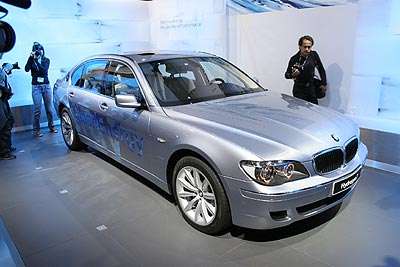
Fuel Cell Cars: The Challenges
Like any new technology, the cost of producing a fuel cell vehicle is considerably higher than the cost of producing a conventional internal combustion powered auto, or a hybrid, or even a battery electric car for that matter. As time goes on, and more efficient methods of producing fuel cells are discovered, that will change.
Producing a fuel cell stack that functions reliably in as broad a range of operating environments as passenger automobiles are exposed to is another challenge. Current fuel cell stacks are good for about 75,000 miles. And while this is admirable, most consumers are understandably reluctant to buy into any automotive technology that will give them less than 150,000 miles of reliable service. Recent innovations promise to make that a reality by about 2015.
However, storing enough hydrogen onboard the vehicle to give it a decent range is yet another challenge. While hydrogen contains three times more energy per weight than gasoline does, it contains only a third of the energy per volume as gasoline does, making it difficult to store enough hydrogen to go as far as a gasoline vehicle can achieve on a full tank—at least within reasonable size, weight, and cost constraints. Current storage methods include high-pressure tanks, sub-zero liquid cold storage, or solid material storage. All of these methods consume considerably more space in a car than a conventional gas tank does.
And then, of course there is the question of refueling. Currently the infrastructure does not exist to support a fleet of hydrogen-powered automobile ripping up and down the nation’s highways. Production, transportation and dispensing systems have to be built and deployed before we can comfortably embrace the technology as fully as other current alternatives.
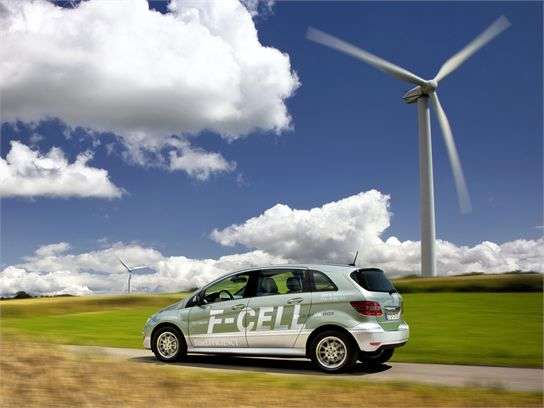
Fuel Cell Cars: The Future
Despite the previously listed challenges, a number of manufacturers have announced intentions to have hydrogen fuel cell models available by model year 2015. Toyota, Hyundai, and Kia all have models currently in development for delivery within that timeframe.
Nissan showed the TeRRA, a hydrogen fuel cell powered SUV concept at the 2012 Paris Motor Show. Mercedes-Benz and Honda are currently producing fuel cell cars. Honda has announced it will launch a replacement for the FCX Clarity in 2015.
The Mercedes model is called the F-Cell. Offered as a lease-only proposition at $599 monthly for three years — including fuel; it delivers an estimated 52-mpg in the city, 53 on the highway and 52 combined. The Honda FCX Clarity delivers 60 miles per gallon on the highway as well as in the city — for an EPA estimate of 60 miles per gallon combined.
